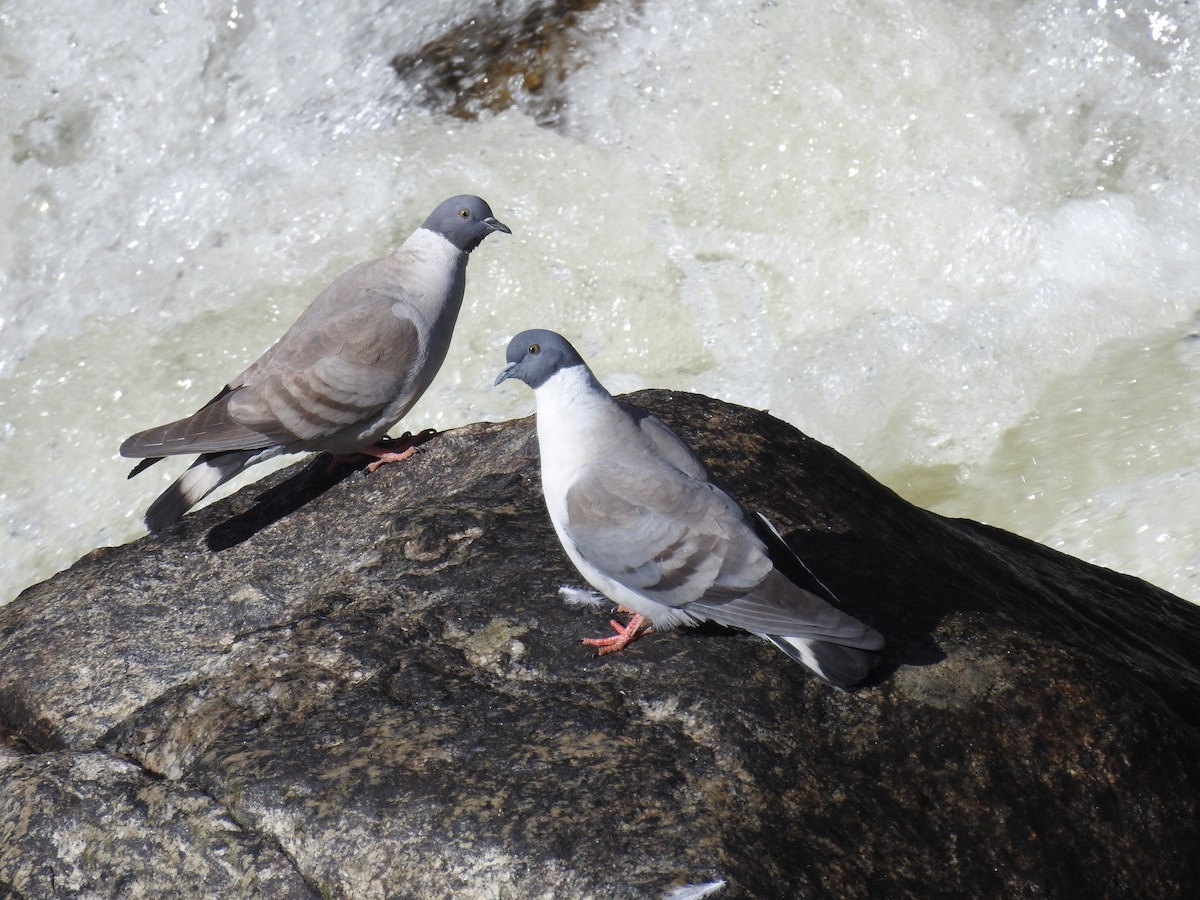Snow Pigeon
A species of Old World Pigeons Scientific name : Columba leuconota Genus : Old World Pigeons
Snow Pigeon, A species of Old World Pigeons
Botanical name: Columba leuconota
Genus: Old World Pigeons
Content
Description General Info
 Photo By Ashwin Viswanathan
Photo By Ashwin Viswanathan Description
Snow pigeons have a blackish head contrasting with white neck collar and white underparts shading into ashy on the abdomen. Their backs are brownish grey with a white patch on the lower back. Their wings are pale grey with three brown bands. Their black tails have a clear white band in the middle which narrows and curve forward to reach the tip of outermost tail features. Young birds have narrow, pale buff margins to the feathers of the upper parts and wings. The white of the underparts is sullied with buff. 
Size
34 cm
Nest Placement
Cliff
Feeding Habits
Snow Pigeon's primary diet consists of seeds, herb bulbs, and small roots. They ingest grit for digestion and forage in pairs or flocks, with winter groups up to 150. Snow Pigeon adapts to eat village grains in winter, favoring boulder-scattered slopes and grassy areas.
Habitat
Snow Pigeon typically reside in mountainous regions characterized by rocky cliffs and steep gorges within the alpine zone. Their preferred habitats include areas that have a climate allowing for colonies above the snow-line, signifying a preference for colder, high-altitude conditions, although specific elevation details are excluded from this description.
Dite type
Granivorous
General Info
Feeding Habits
Bird food type
Behavior
They frequent rocky hill sides and sequestered valleys, seen up to the snow line. They frequently feed in the fields during the day, but roost in the cliffs. They are generally shy and wary. Gatherings of 150 or more occur in winter, often in company of hill pigeon and in some areas with rock pigeon, too. In the summer, they descend to lower heights and are found in pairs or small flocks. They breed in colonies. The nests are placed in crevices or caves in the face of cliffs or ledges of rock. Their nests are untidy interlaced structures made of sticks, grass, straw, feathers, etc. The nests are generally reused every year with minor repairing. Generally, two eggs are laid. They feed on berries, grain, buds, bulbs, seeds, and shoots. 
Distribution Area
They are resident birds in rocky hills of Afghanistan, Bhutan, China, India, Kazakhstan, Myanmar, Nepal, Pakistan, Tajikistan, and Turkmenistan. It is a common bird and has an extremely large range. The population is believed to be stable, and for these reasons, the International Union for Conservation of Nature has assessed its conservation status as being of least concern. 

 Photo By Ashwin Viswanathan
Photo By Ashwin Viswanathan Scientific Classification
Phylum
Chordates Class
Birds Order
Pigeons and doves Family
Dove Genus
Old World Pigeons Species
Snow Pigeon